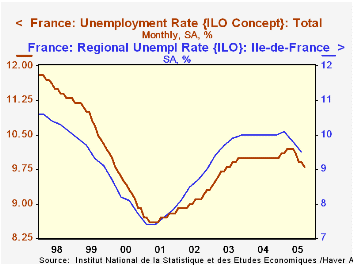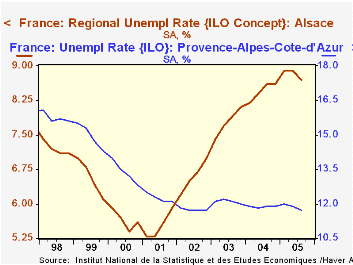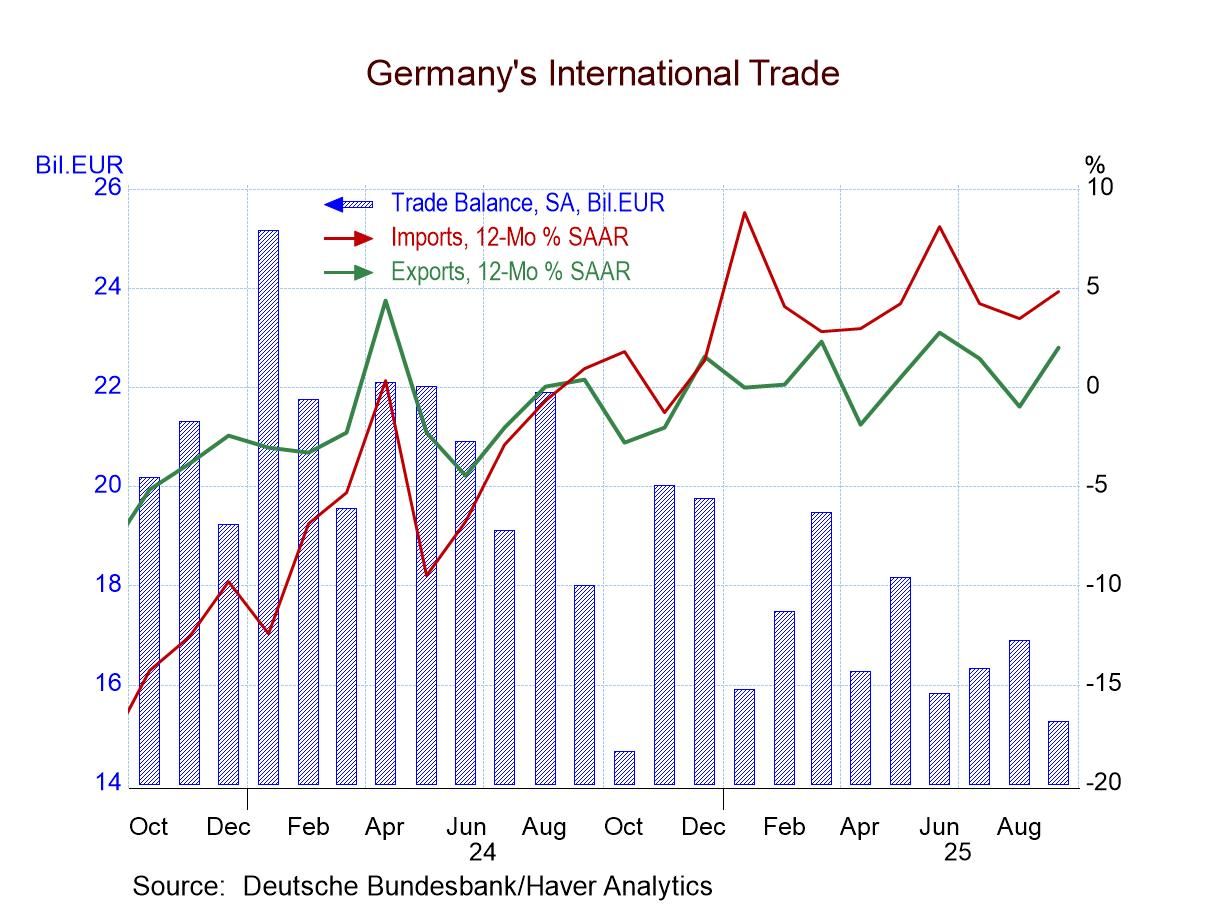 Global| Nov 09 2005
Global| Nov 09 2005France: The Riots Come Just When Unemployment Was Starting To Ease
Summary
The riots in France are widely believed to be linked to unemployment conditions, particularly among young people from North African immigrant families. As we discussed here September 30, national unemployment stands at just under 10%, [...]

The riots in France are widely believed to be linked to unemployment conditions, particularly among young people from North African immigrant families. As we discussed here September 30, national unemployment stands at just under 10%, and the rate for workers under 25 is more than twice this, at about 23%. This morning, the French Government statistical agency INSEE reported regional unemployment rates, which we carry in the FRANCE database. These cover the total labor force and are not broken down by age-group. These, along with September's monthly national data reported ten days ago, indicate that rates have been decreasing, now since June.
In the accompanying charts and table, we highlight "departments" that the New York Times reports today contain cities on a list authorized by the central police to impose a curfew, that is, where the violence is deemed to be greatest. These include Paris, Nice, Marseille, Dijon, Toulouse, Strasbourg, Nancy, Rouen, Avignon. Ironically, as seen in the exhibits, unemployment rates in the relevant departments had started to ease in Q3. The national rate fell from 10.1% to 9.8%, and every department we show here was down by at least 0.1% on the quarter. Still, these decreases are a very recent development, with the longer runs of these series still generally headed upward. Only in Provence, in the South, is unemployment even steady with its level three years ago. Another fact of irony is the situation in Alsace, with one of the lowest unemployment levels in the country; it is also the locale with the largest increase, from just 6.6% on average in 2002 to 8.7% in Q3 2005. So conditions of relative prosperity there eroded markedly, at least through the middle of this year.
It's clearly too soon to see the effect of the disturbances on any other French economic data, but a final irony of course is that the situation is likely to be dampening activity, just when the worst of the unemployment conditions might have been starting to stabilize on their own.
| France & Selected Departments: SA, % | Q3 2005 | Q2 2005 | Q3 2004 | 2004 | 2003 | 2002 |
|---|---|---|---|---|---|---|
| France: Total | 9.8 | 10.1 | 10.0 | 10.0 | 9.8 | 9.1 |
| Ile-de-France (Paris) | 13.3 | 13.4 | 13.2 | 13.1 | 12.7 | 12.3 |
| Bourgogne (Dijon) | 8.5 | 8.8 | 8.7 | 8.7 | 8.6 | 7.9 |
| Haut-Normandie (Rouen) | 10.8 | 11.0 | 11.0 | 10.9 | 10.6 | 10.1 |
| Alsace (Strasbourg) | 8.7 | 8.9 | 8.6 | 8.5 | 7.8 | 6.6 |
| Pyrenees (Toulouse) | 9.8 | 9.9 | 9.9 | 9.9 | 9.9 | 9.5 |
| Provence (Avignon, Nice, Marseilles) | 11.7 | 11.9 | 11.9 | 11.9 | 12.1 | 11.7 |
Carol Stone, CBE
AuthorMore in Author Profile »Carol Stone, CBE came to Haver Analytics in 2003 following more than 35 years as a financial market economist at major Wall Street financial institutions, most especially Merrill Lynch and Nomura Securities. She had broad experience in analysis and forecasting of flow-of-funds accounts, the federal budget and Federal Reserve operations. At Nomura Securities, among other duties, she developed various indicator forecasting tools and edited a daily global publication produced in London and New York for readers in Tokyo. At Haver Analytics, Carol was a member of the Research Department, aiding database managers with research and documentation efforts, as well as posting commentary on select economic reports. In addition, she conducted Ways-of-the-World, a blog on economic issues for an Episcopal-Church-affiliated website, The Geranium Farm. During her career, Carol served as an officer of the Money Marketeers and the Downtown Economists Club. She had a PhD from NYU's Stern School of Business. She lived in Brooklyn, New York, and had a weekend home on Long Island.





